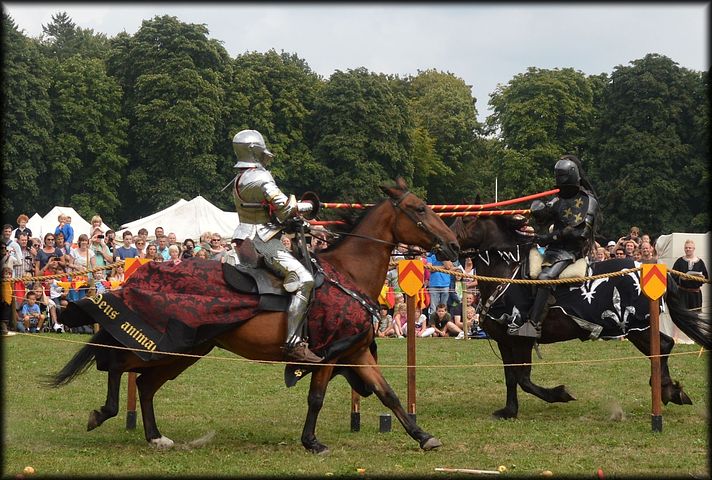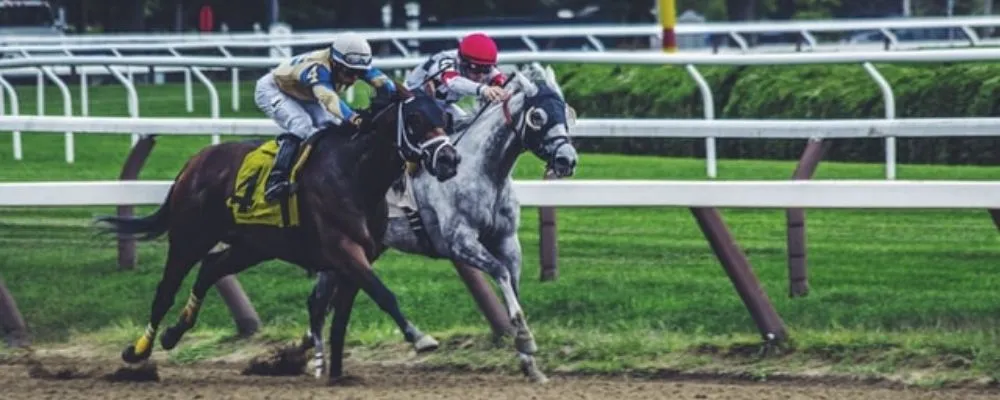Can Jousting take place in the Maryland sports betting scene?

Everything you need to know about Jousting in Maryland
Jousting has been an integral part of Maryland for years. Today, it is the official sport of the state. Keep reading to learn more about jousting.
Will jousting take a place in the betting market in Maryland?
In December 2021, the first retail sportsbook opened in Maryland. Voters approved the legalization of sports betting in Maryland, in November 2020, and state legislators passed bills that allowed wagering in April 2021. The state has issued licenses for on-site sports betting at six casinos in Maryland. Additionally, there are three significant professional sports arenas: the state fairgrounds, horse racing tracks, and a riverboat casino on the Potomac River.
Maryland has 60 licenses for online sportsbooks that will be up for grabs in the near future, while there are still 30 retail betting licenses available for further applications. This shows that sports betting is expected to grow in the state.
Retail sportsbooks that are already in operation offer clients a wide array of sports markets. However, none of them has jousting. But the chances are this may change when mobile sports betting is allowed. Since jousting is a central to Maryland and most residents follow it closely, reputable operators like FanDuel, BetMGM, Caesars, and Draftkings might include it on their platforms.
History of Jousting
Jousting tournaments, a medieval practice brought over from the age-old country, have been held in the Mid-Atlantic state throughout colonial times. However, Maryland did not proclaim it as its officially sanctioned sport until 1962, making it the first state in the United States to officiate the game.
Only a few states in the United States have chosen jousting as an official state sport, and even fewer have picked anything as unusual as jousting. Due to the influence of colonial Maryland’s first governor, Cecil Calvert, and thereafter his son Charles, the sport extended its reach from England to Maryland. It’s a custom that has endured through the years, becoming ingrained in the cultural DNA of the state.
Moreover, the game was established to prepare cavalry soldiers for battle. Two armored horsemen charged at each other, hoping to break their opponent’s lance or knock him from his horse. Apart from their military value, the competitions became extremely popular among the general population, resulting in tournaments involving warriors, noblemen, and even monarchs.
How was Jousting played?
A single joust consisted of two armored knights on horseback charging at one other with outstretched spears in a quest to knock one another. Tournaments were staged in places where numerous knights might congregate, and they were frequently accompanied by several other combat festivals and events.
Most tournaments were organized haphazardly, with little regulation, and were held either for the training of knights or solely for the enjoyment of nobility. However, the most main prerequisite was an invitation from the event’s host, which typically necessitated the rider’s aristocratic heritage.
The long runway used for jousting battles, known as a list, had no specific length, width, or ground type criteria. Instead, the host nobility prepared an arbitrary jousting arena, frequently just because it was ideal for the spectators rather than the jousters.
Medieval times jousting rules
The size and structure of lances were not regulated in medieval times like they are now. Based on their expertise, each knight created his preferred lance. Tougher riders would choose a bigger, stronger, or longer lance, whilst nimbler knights chose a lighter lance and relied on skills rather than brute force to topple their opponent. Spear designs and structures evolved to accommodate new materials like iron and diverse jousting objectives.
Furthermore, the rules of the tournament differed with regions. Some tournaments allowed no-holds-barred lance with few rules, while others allowed only direct smashes to the opponent’s shield to unseat them. Once a knight was unseated, most single jousts came to an end. However, at other competitions, sword fights lasted on the ground until one knight surrendered or was killed.
Modern-time jousting
The traditions shifted as elites got more interested in jousting. In certain regions, seeing a knight’s lance break explosively became more coveted than seeing him hurt or depose his opponent. Ring jousting was eventually devised, in which riders used their spears to lance a ring dangling on a ribbon, exhibiting their prowess and graciousness before the women of the court without harming anyone.
With the increasing popularity of baroque carnivals and the romantic image of Arthurian knights, jousting as a sporting competition resurfaced after a long period of absence. Jousting tournaments are still held today. Modern jousting comes in a variety of forms, each with its own set of regulations. Some jousting styles involve using your spear to pick up tent pegs or pierce a ring rather than riding against an opponent. Ring jousting has been declared the state sport of Maryland.
The Society for Creative Anachronism (SCA) organizes several knight-versus-knight jousting events in North America. The SCA allows each state to fine-tune its tournament regulations, however, the SCA does provide some standards.
In Maryland, ring tournaments are held, in which a horse is charged at full speed along an 80-yard course at suspended rings. The rider has eight seconds to finish the course and strike the rings with a lengthy, fine-tipped spear, earning points in the process. Rings ranging in circumference from one-quarter inch to nearly two inches are suspended from three evenly placed arches 6 feet 9 inches above the ground, depending on the contestant’s ability level. Jousting is a family pastime that is usually passed down through the generations.
How is jousting won?
Three rounds, or tilts, of the knights down the list make up a match. The purpose of modern jousting is not to defeat your opponent, but rather to crush your spear on their body or shield.
The score may be determined by the joust’s Marshall. The traditional counting rules are as below, from lowest to highest:
- The tip of the knight’s lance makes contact with the opponent, but it doesn’t shatter.
- A single portion of the Lance tip has broken off.
- The point of the lance is fractured.
In addition, several games are held to remove competitors and determine a single winner. When a knight’s lance collides with his opponent’s horse, he is disqualified. By riding along with the list with his spear dropped, a knight may lose his tilt.





